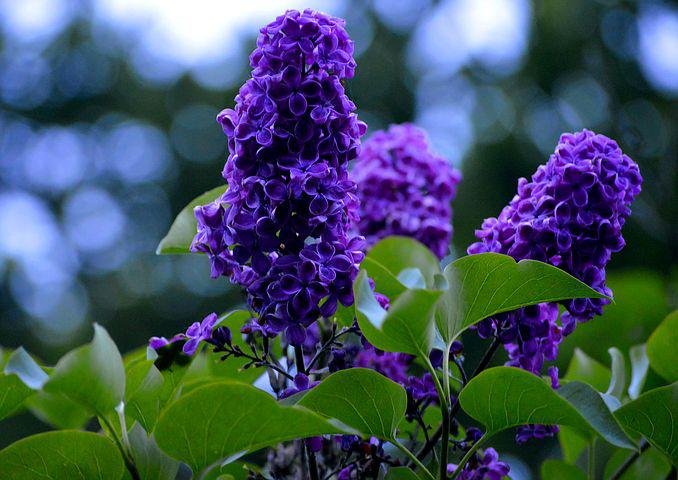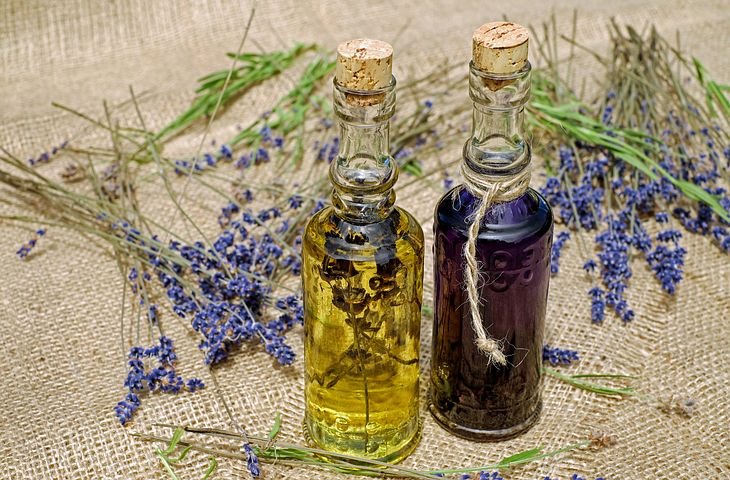Lavender (Lavandula spp) is an herb that originated in the Mediterranean and surrounding areas. It can be traced back to 2500 years and is native to Europe, East Africa, Southwest Asia, and India. It is a beautiful plant with many valuable qualities, and it proliferates so that it can thrive worldwide.
Lavender can be planted in the spring after the risk of frost has passed and the soil has warmed up. It can grow moderately, adding a few inches to its size each year.

Lavender is a plant that can be used for multiple purposes like landscaping beauty, fragrance, and culinary uses. It can also make a refreshing facial tonic that many women often appreciate. It is perfect for oily skin and can help eliminate acne and pimples and skin discoloration.
| Common Name | Lavender |
| Botanical Name | Lavandula spp |
| Family | Lamiaceae |
| Plant Type | Herbaceous Perennial |
| Mature Size | 2-3ft tall,2-4ft wide |
| Sun Exposure | Full sun |
| Soil Type | Dry, well-draining |
| Soil pH | Alkaline |
| Bloom Time | Summer |
| Flower Color | Purple |
| Hardiness Zones | 5a-9a USDA |
| Native Areas | Europe |
| Toxicity | Toxic to dogs and cats. |
How To Care For A Lavender Tree
Lavender is a shrub that belongs to the Lamiaceae mint family. However, it is both a decorative and cultivated plant. To get the best results in growing lavender, you need to consider the growing conditions and the varieties you want to grow.
The Lavender plant has been valued for years not only for its beautiful color but also for its strong fragrance. One interesting fact about lavender is that it is easy to grow and not too problematic. Not only is lavender easy to grow, but it is also of great benefits and very easy to maintain and care for.
Here is a Guide to Caring For a Lavender Tree
1 . Light
Lavender plants will thrive best in full sunlight and can’t tolerate any shade. It is advisable not to plant them in a spot where trees or other large plants will overshadow them.
2. Soil
The soil type for the lavender plant is dry; well-draining soil hits poor soil and encourages a higher concentration of oils. If you use a traditional potting mix, add some sand for drainage. Also, the alkaline or chalky soul will enhance the fragrance, but a pH below 6.5 will cause the plants to be short-lived.
3. Water
The Lavender plant is extremely drought-tolerant once established. New plants or transplants will require more water, so water them regularly until they are established. Avoid overhead watering, which wets the foliage.
Only apply water to the base of the plant. Also, adjust your watering schedule as the seasons change because excessive watering can leave plants susceptible to root rot and other fungal and bacterial diseases.
4. Temperature And Humidity
The plants can withstand temperatures except cold temperatures, which are responsible for killing them. Protect the plants from harsh winter winds by planting them next to a stone or brick wall to provide additional heat and protection.
5. Fertilizer
If you must use fertilizer, use a balanced time-release organic fertilizer at half strength mixed well with backfill soil at the planting time. Other alternatives are well-aged compost or worm castings.
Types Of Lavender
There are many varieties of Lavender, but the most popular of them are;
1 . English Lavender
English Lavender (Lavandula Angustifolia), also known as true lavender, is frost resistant and can survive difficult conditions of cold climates. It is the hardest of all lavenders and can grow up to 1 meter tall.
2. French Lavender
French Lavender (Lavandula Dentata), also called fringed lavender, is an annual plant and can survive up to 7 degrees Celsius in cold regions. It produces dense purple-blue flower spikes that are mildly fragrant.
3. Spanish Lavender
Spanish Lavender (Lavandula Stoechas) is a different type of Lavender that is vulnerable to low temperatures in cold regions and can grow 1-2ft tall and 2_3m wide.
4. Lavandin (Lavandula X Intermedia)
Lavandin is similar to English Lavender and can grow up to 60cm. Its leaves have a beautiful silvery-green color, and its flowers are purple.
What Is Lavender Used For?
The use of lavender can be dated back many centuries. Back in those days, the Egyptians used lavender in the mummification process while the Romans bathed in it. In the modern world today, the most common use of lavender is in cooking, crafting, and medicinal uses.
Lavender is widely used for the essential oils derived from it. The lavender oil is extracted by a steam distillation process of fresh and dried flowers, and it has many therapeutic and biological properties.

Over the years, Lavender oil has been used for several purposes. It is toxic when swallowed and unapproved by the Food and Drug Administration.
1 . Lavender Is Used In Cooking
Lavender infuses a sweetly herbal flavor into desserts, beverages, sauces, and marinades and can stand in for Rosemary in recipes.
2. Lavender Is Used As A Natural Remedy For Pain
Lavender is highly effective when dealing with acute or chronic pain. Though it is advisable to see a doctor depending on how severe the pain is, before doing that, try aromatherapy with just 2 percent Lavender essential oil diluted in water.
3. Lavender Helps To Relieve Menstrual Pain
According to Pain Management Nursing, women who smelled Lavender for 30 minutes a day during the first three days of their period hardly complained about pains in the next two months.
4. Lavender Helps Prevent Hair Loss
Research has shown that applying Lavender essential oil once a day for four weeks can help prevent hair loss from Alopecia Areata. Lavender Oil can also help in hair growth.
5. Lavender Can Combat Fungal Infections
Lavender oil has antibacterial and antifungal properties that could help combat fungal infections like athlete’s foot, ringworm, yeast infections, etc.
6. Lavender Is Used To Alleviate Digestive Problems
You must have seen varieties of Lavender teas in grocery stores. Most Lavender teas are designed for sleep benefits, while the rest aid digestion. Lavender can aid different digestive issues like vomiting, nausea, intestinal gas, abdominal swelling, etc.
7. Lavender Can Help Reduce Stress And Anxiety
When inhaled, the smell affects mood, productivity, and mental illness by providing a calming sensation to the brain. It can also improve symptoms of anxiety-like restlessness, disturbed sleep, and other symptoms anxiety can cause.
8. Lavender Helps Prevent Skin Blemishes
Lavender kills bacteria and can prevent and heal acne breakouts. Lavender oil helps to unclog pores and reduces inflammation when used on the skin. It can also be used as a facial toner. Just mix two drops of Lavender oil with one teaspoon of witch hazel.
What Is Lavender Not Used For?
Since Lavender provides a wide range of benefits, it can also be ineffective for some specific treatments. They include
- Constipation
- Otitis or Ear Infections
- High Blood Pressure
- Colic In Infants
- Migraines
- Eczema
- Depression
- Cancer
